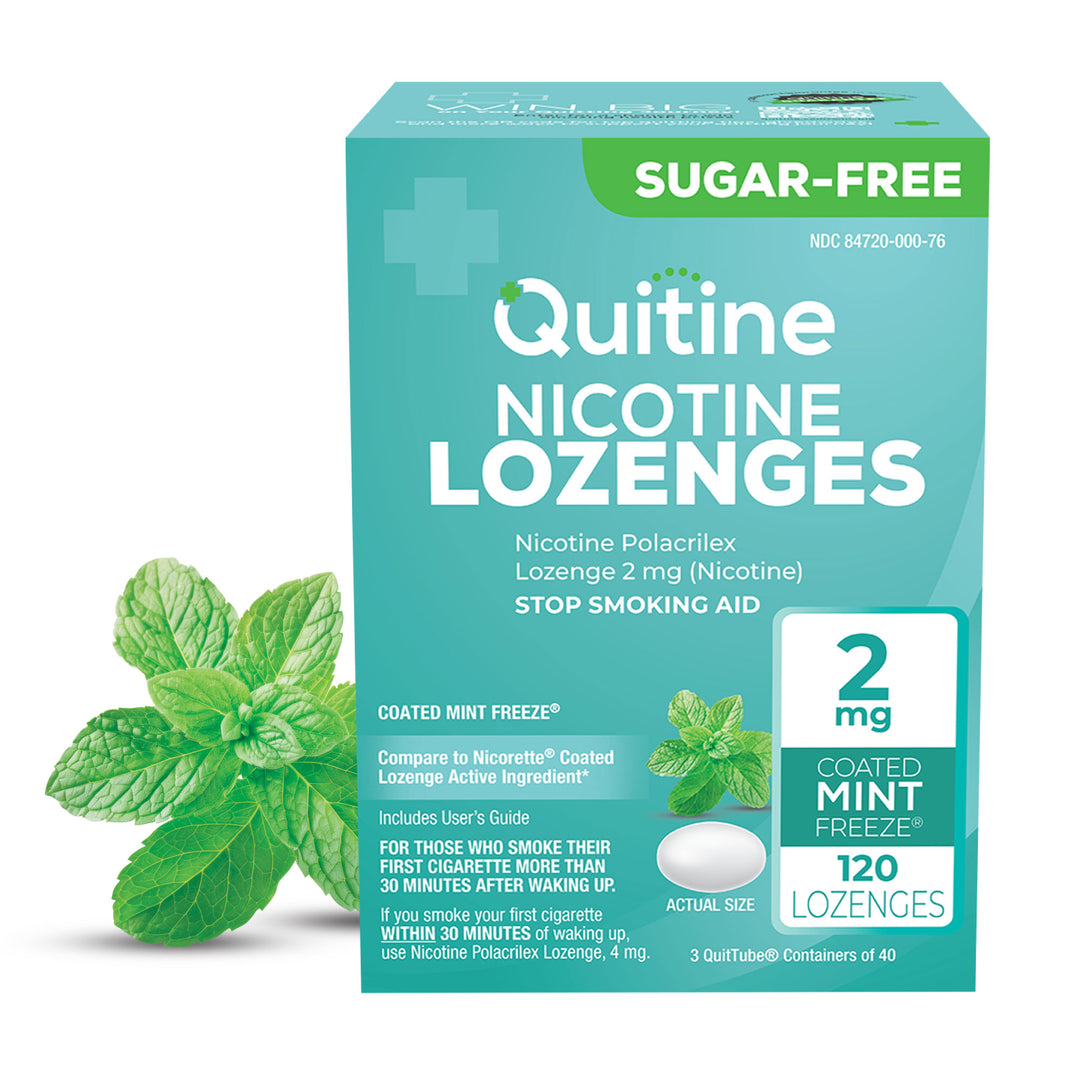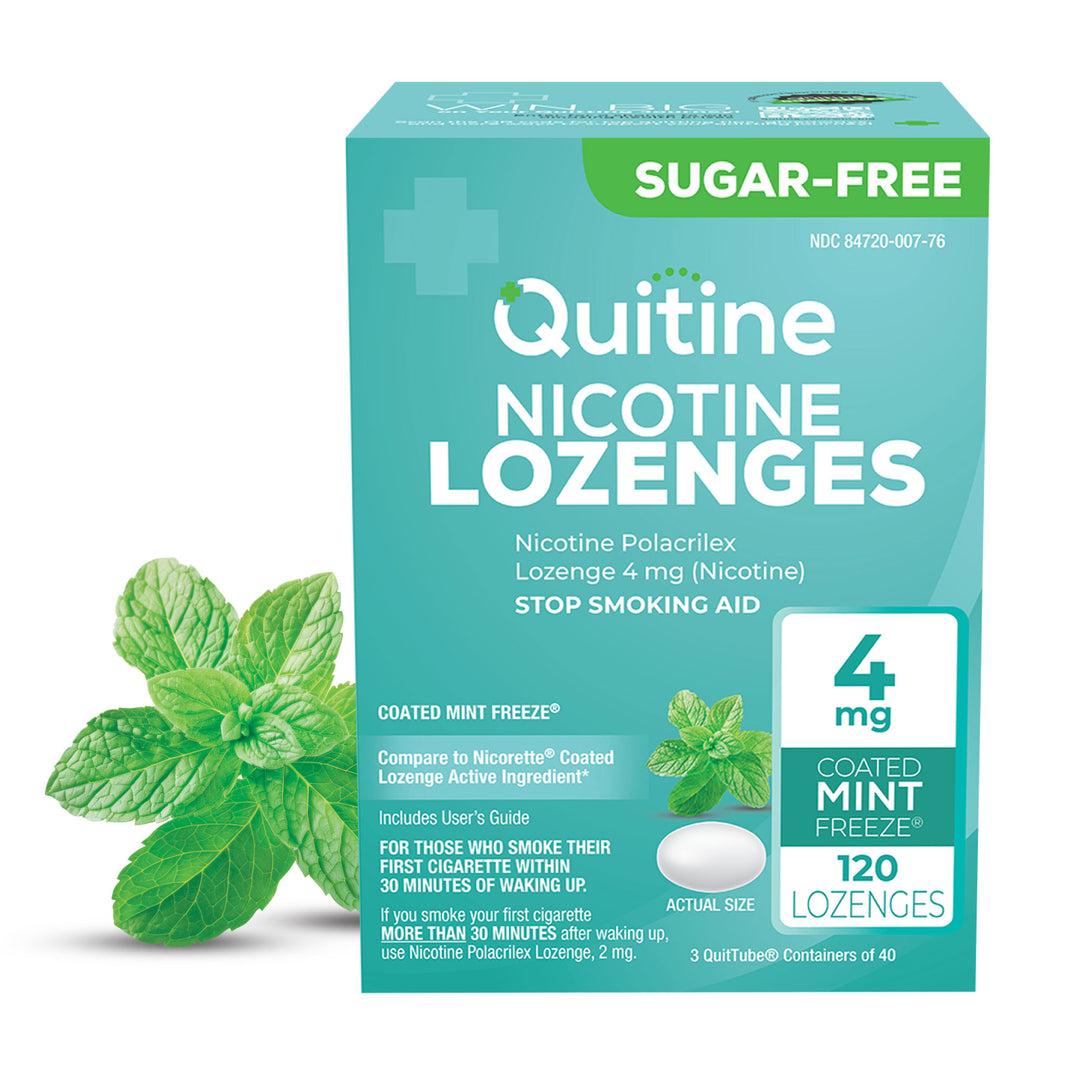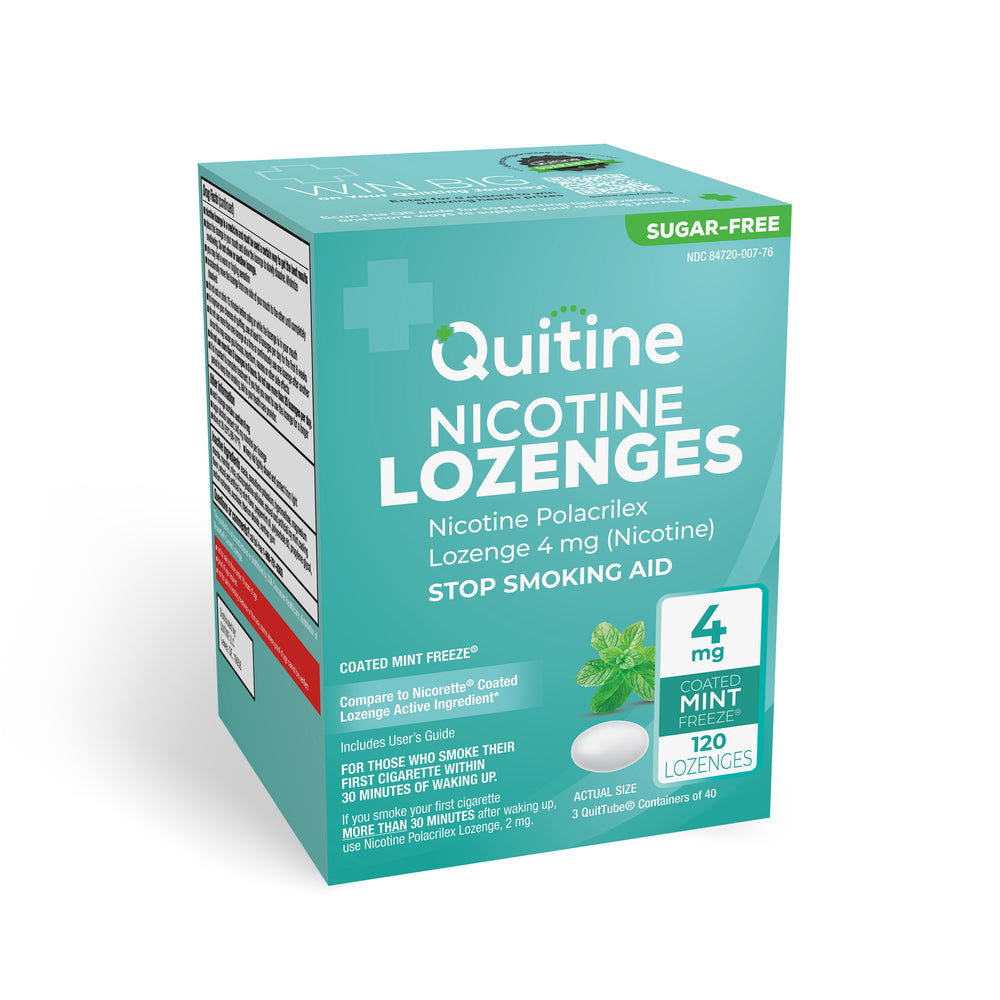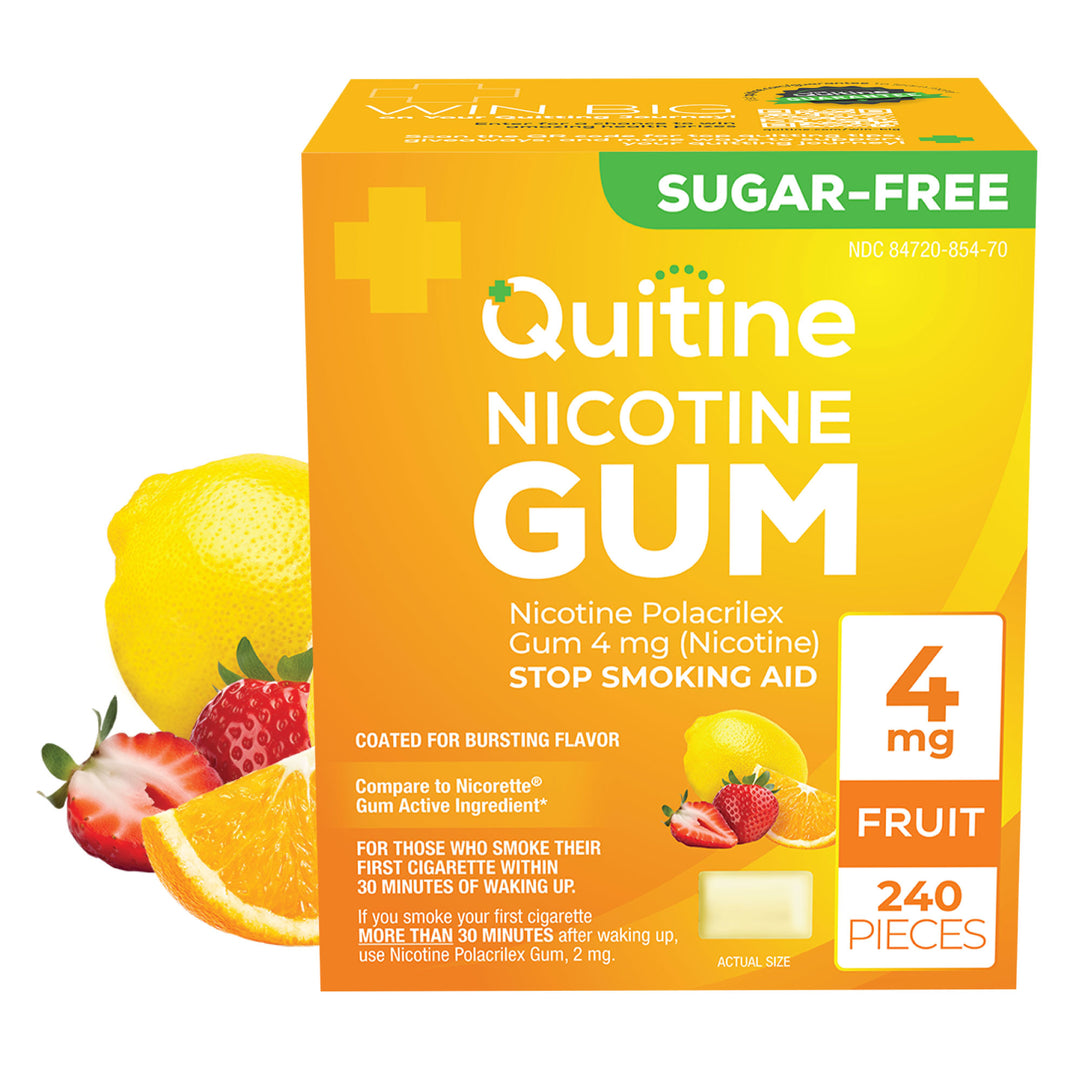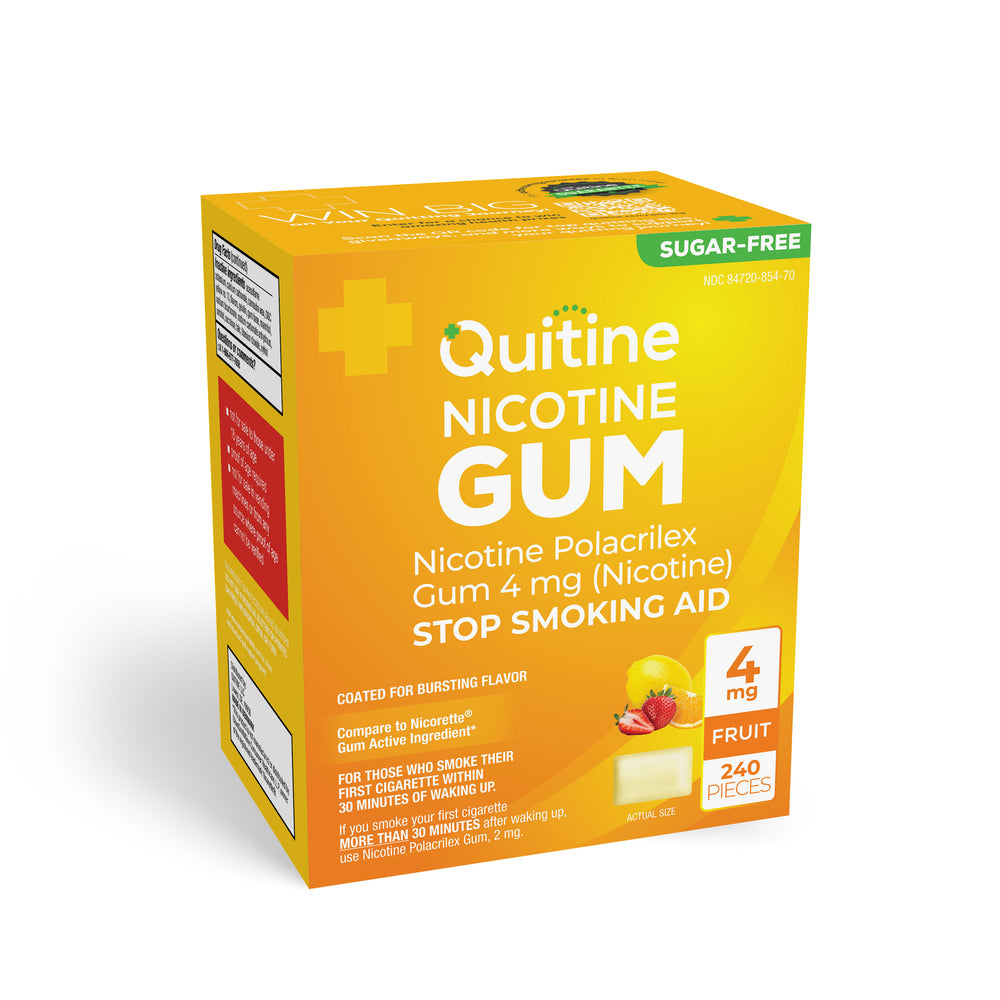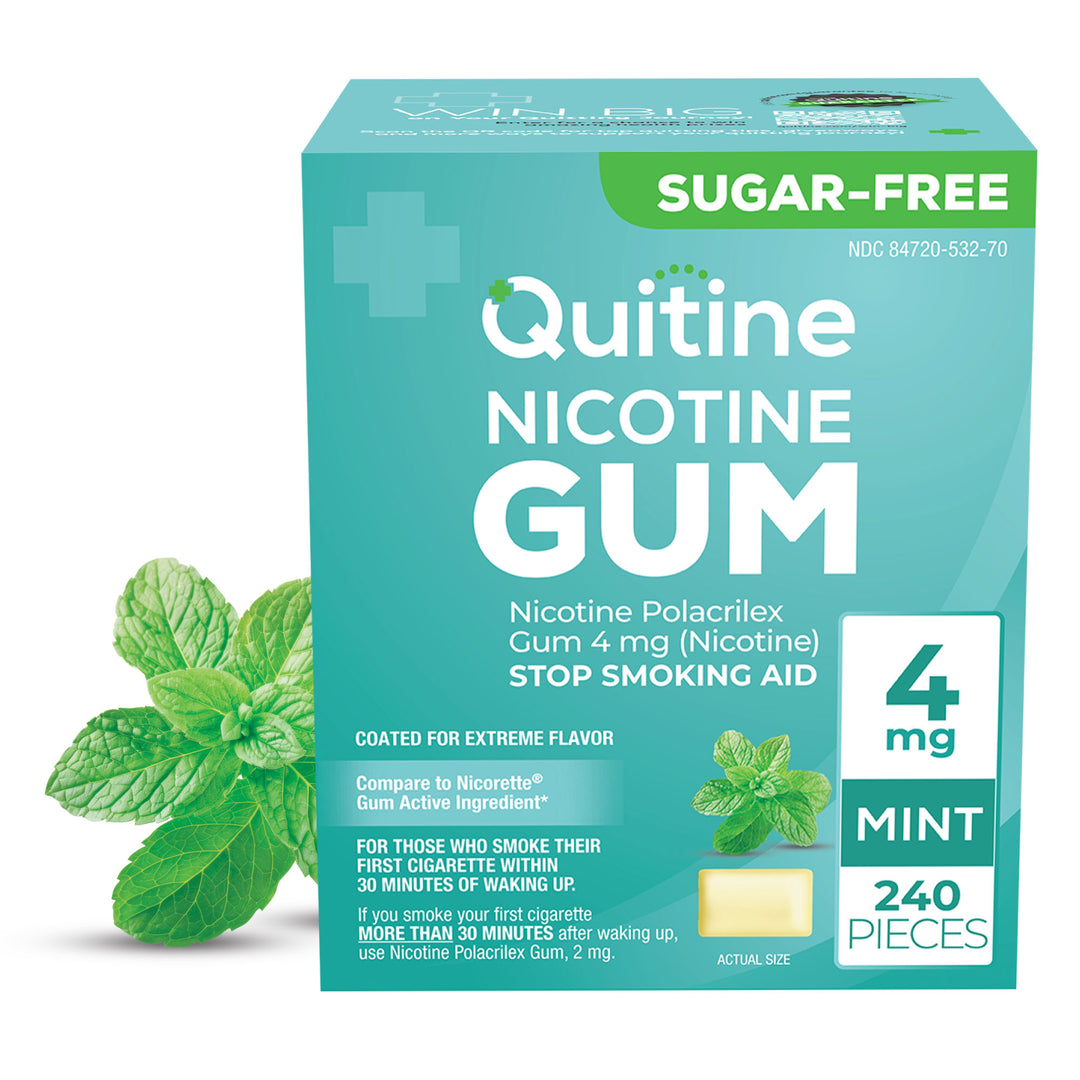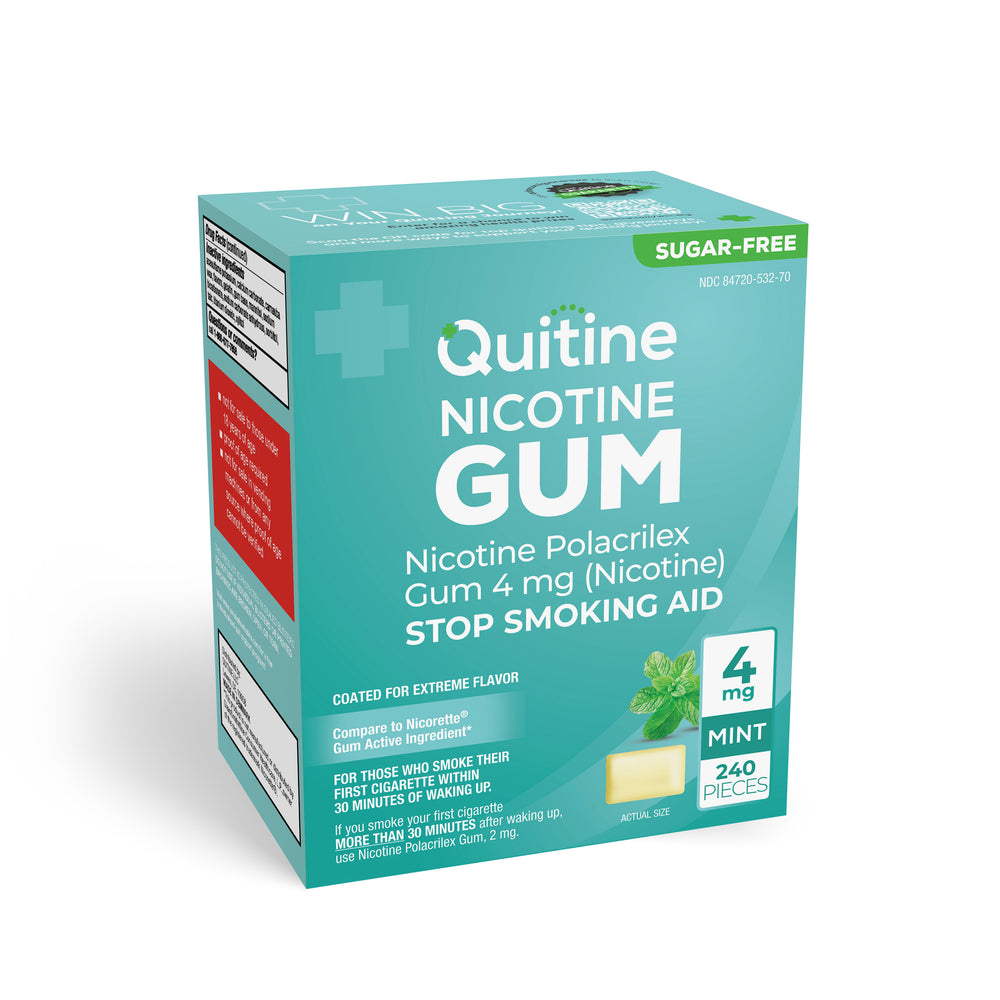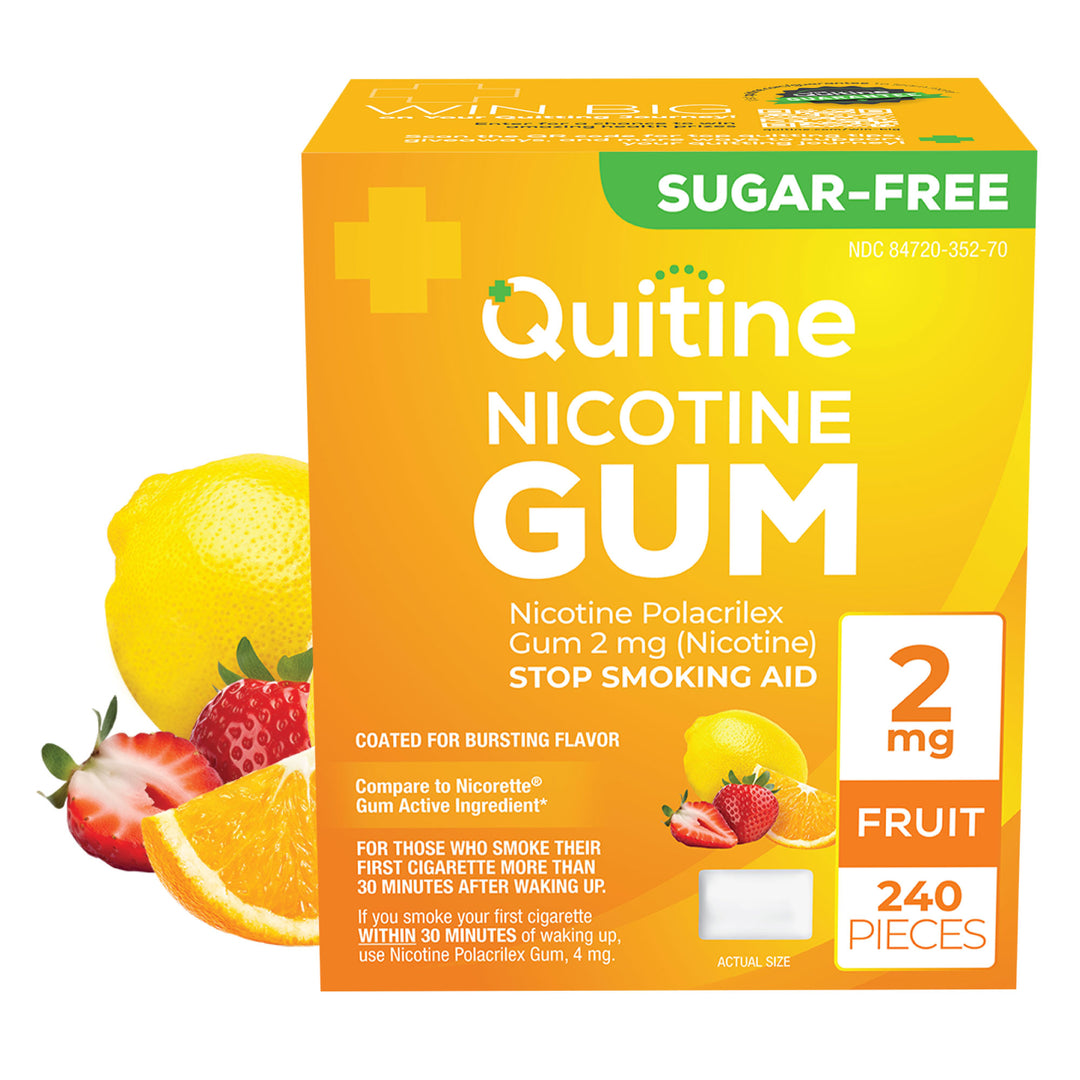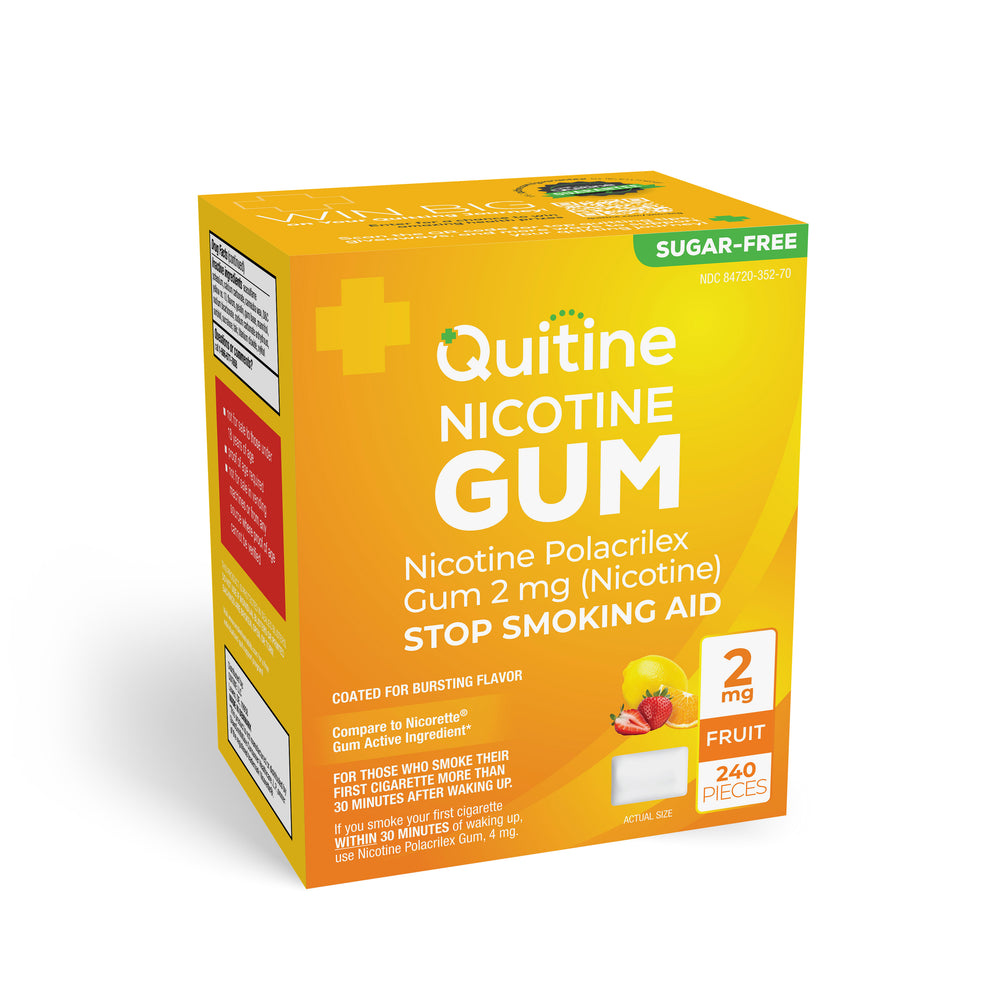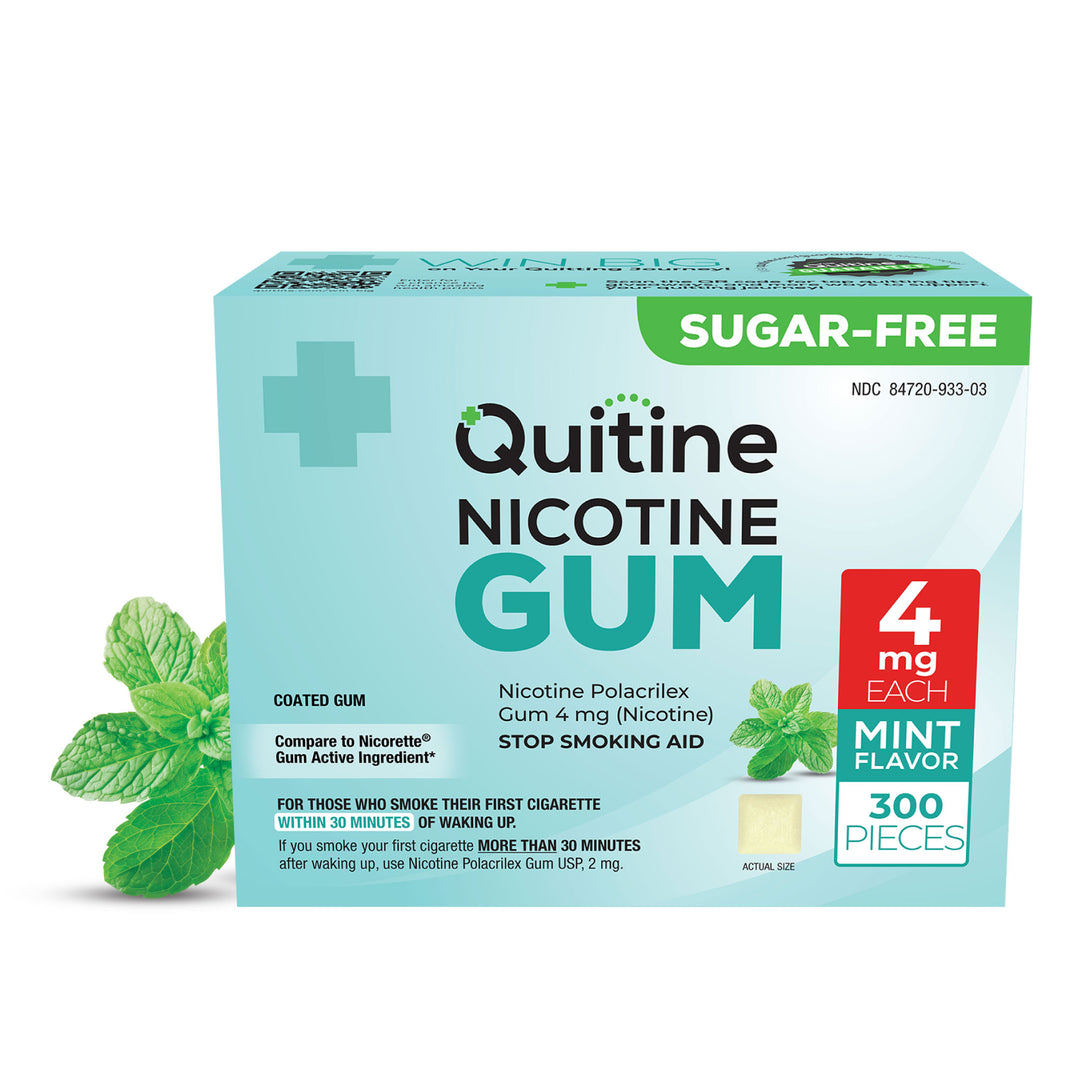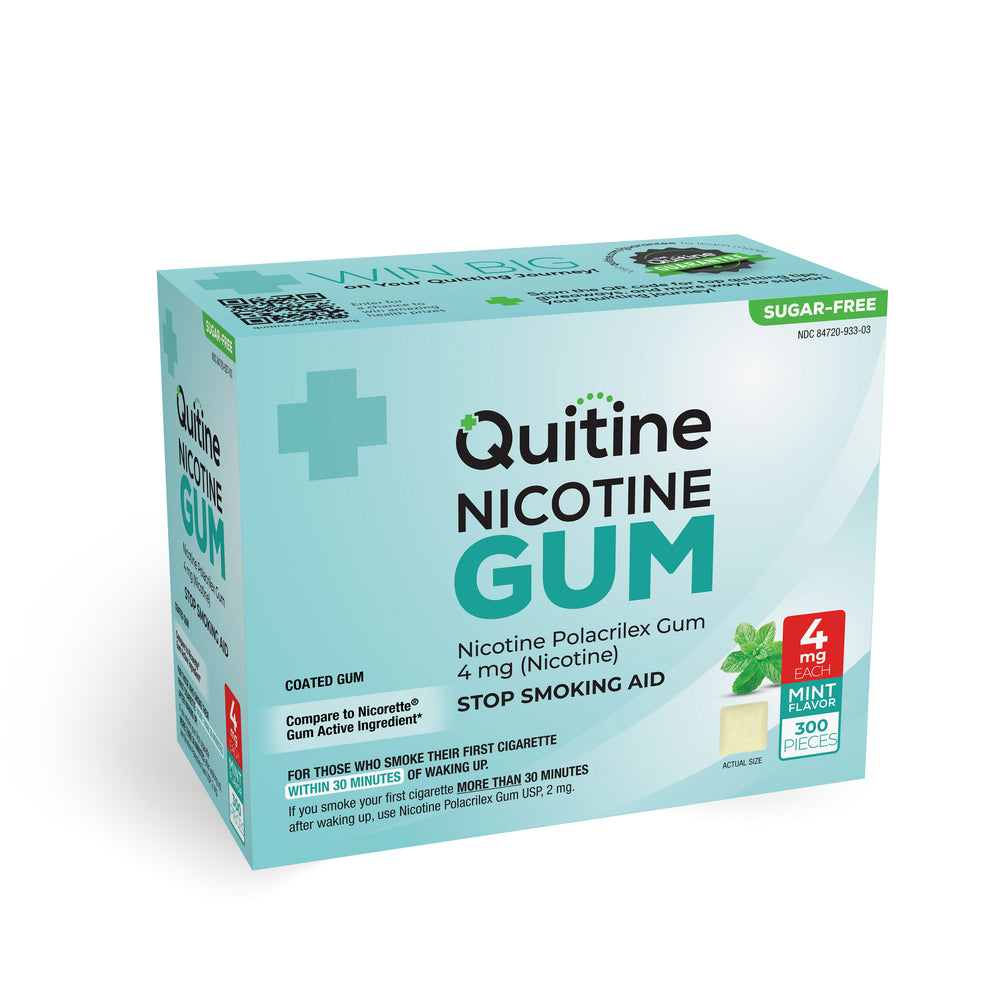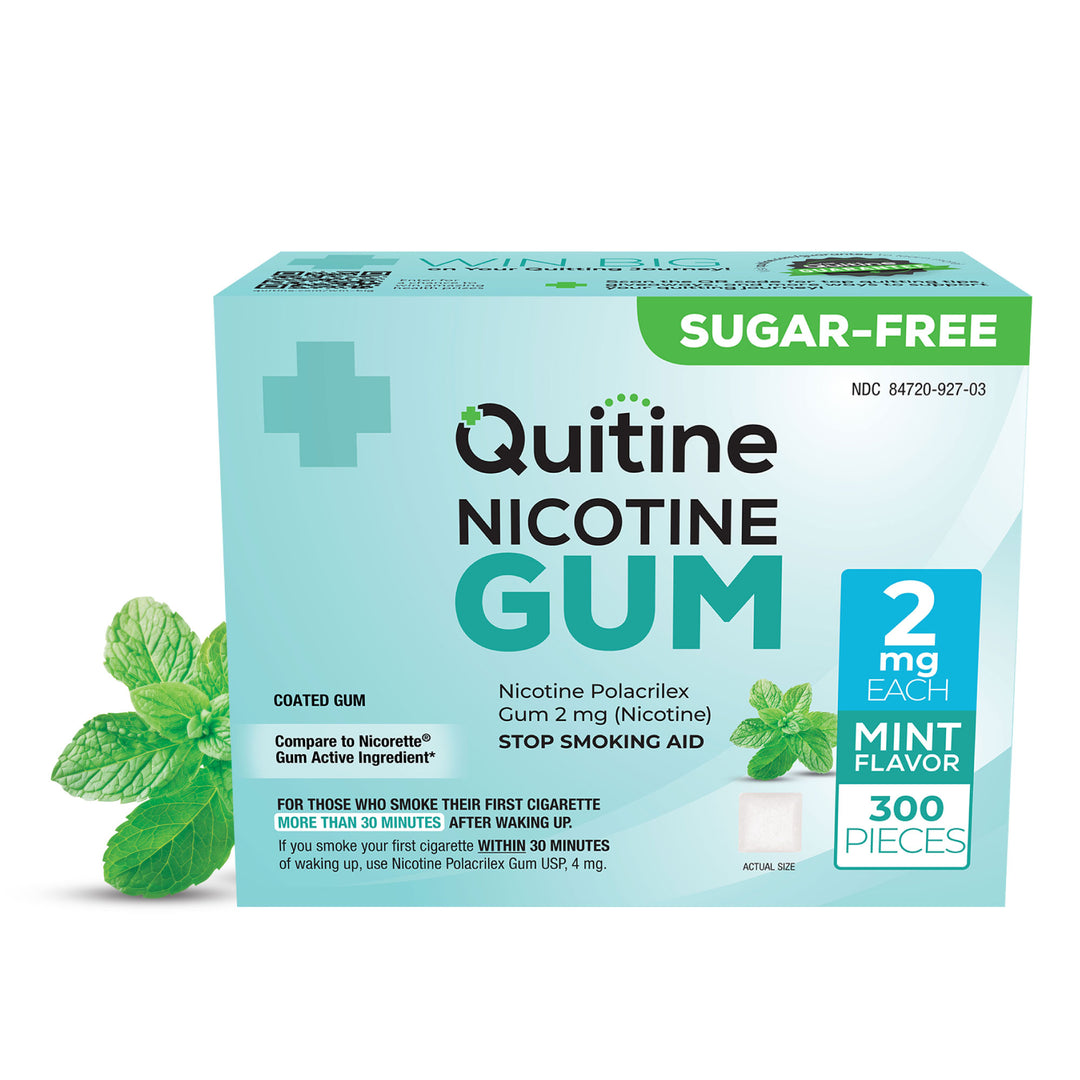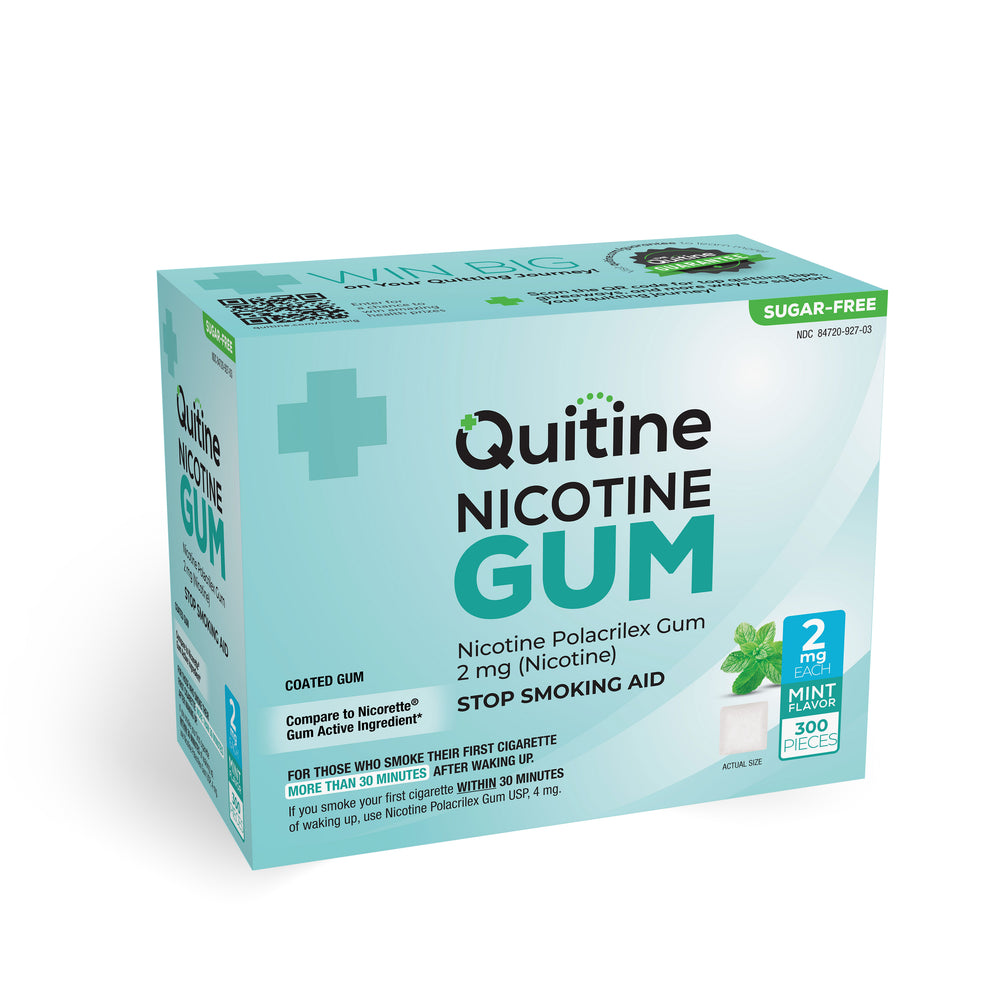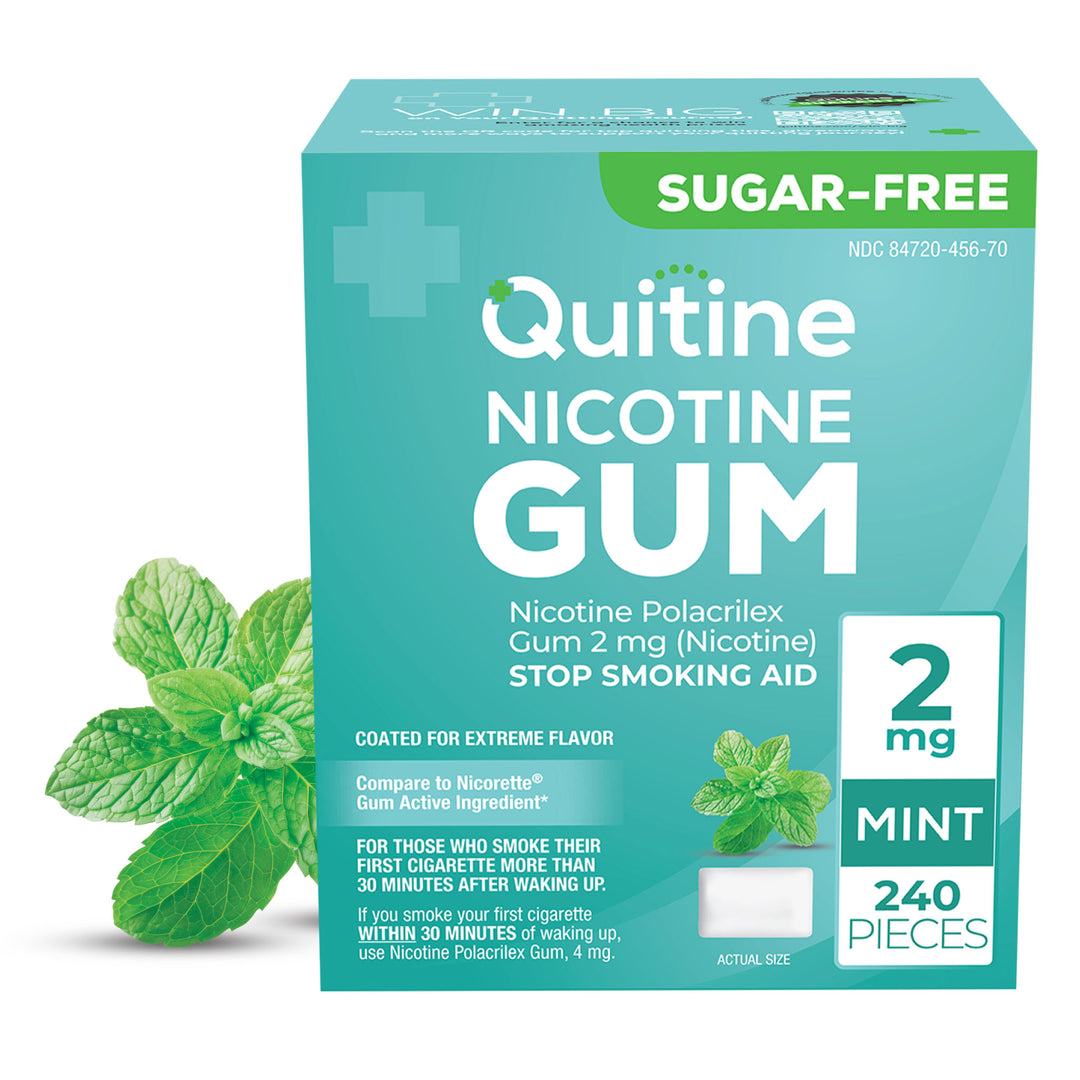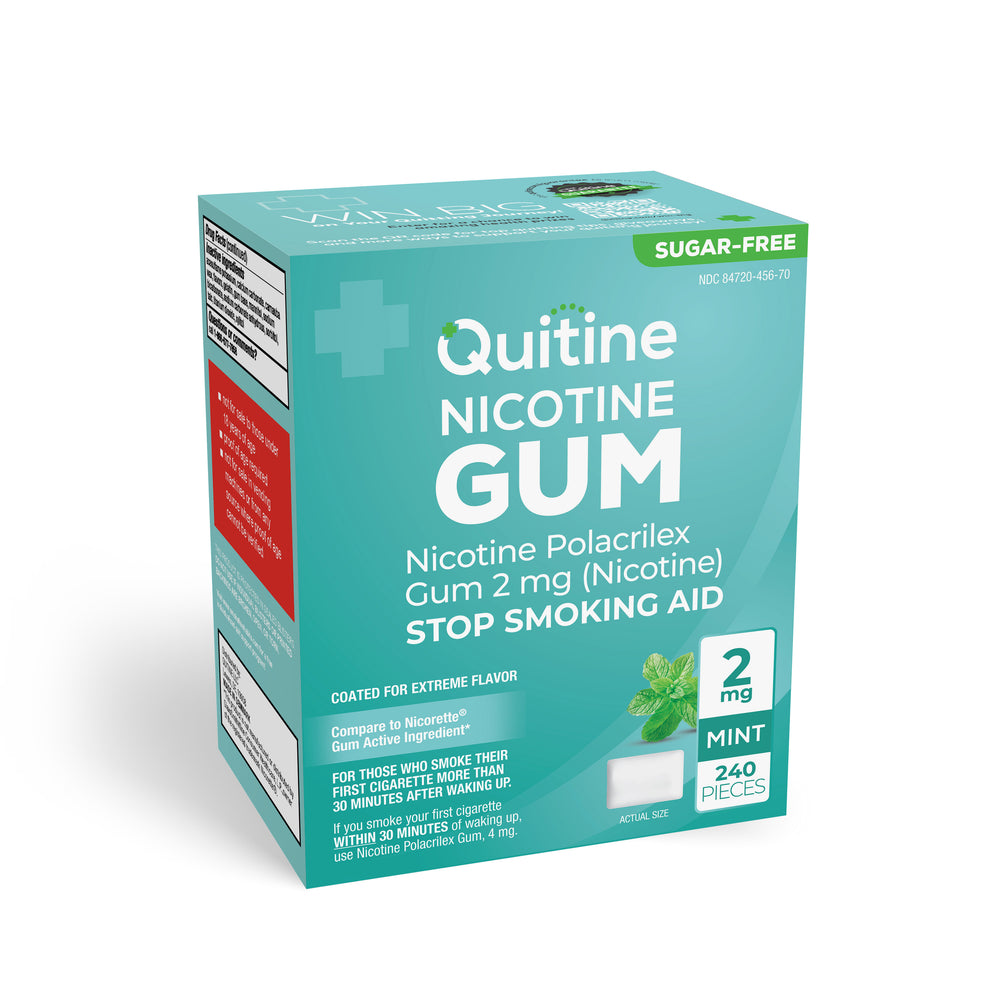Best Quit Smoking in 2025
|
Rank |
Brand |
Description |
|
1 |
Quitine is a brand dedicated to supporting individuals on their journey to a smoke-free and vape-free life through nicotine replacement therapy (NRT). Founded by a pharmacist with over 40 years of experience, it offers nicotine gum and lozenges in 2 mg and 4 mg strengths, with options like traditional gum for a familiar texture and long-lasting flavor, and classic gum for a firmer chew with a quick flavor burst. Key features include a subscription service for regular deliveries with discounts, a 30-day money-back guarantee, and a Quitter Toolkit providing tips, expert advice, and blogs on topics such as nicotine benefits and product usage. Benefits encompass improved health, increased energy, financial savings, boosted confidence, and reliable support through customer testimonials highlighting affordability and effectiveness in managing cravings. |
|
|
2 |
Nicorette |
Nicorette is a trusted smoking cessation brand that helps users quit by gradually reducing nicotine exposure through products like gum, mints, lozenges, and patches. FDA-approved and proven effective, it delivers fast relief from cravings with great-tasting options in flavors such as mint and fruit. The brand includes innovations like SmartControl Technology for steady nicotine delivery and a custom quit program tailored to different smoker profiles, whether light or heavy. With over 40 years of research, it has assisted millions in achieving a smoke-free life by addressing withdrawal symptoms and supporting behavioral changes through resources and support tools. |
|
3 |
NicoDerm CQ |
NicoDerm CQ provides nicotine patches that assist in quitting smoking by releasing a steady flow of therapeutic nicotine through the skin for up to 24 hours, helping to prevent cravings and ease withdrawal symptoms. Its Extended Release SmartControl Technology ensures consistent delivery without sudden spikes. Designed as a discreet option wearable under clothing, it follows a three-step program based on daily cigarette consumption, starting with higher doses and tapering down. This approach allows freedom in daily activities while focusing on becoming smoke-free, with a focus on long-term success through gradual adjustment. |
|
4 |
Habitrol |
Habitrol offers transdermal nicotine patches that aid in quitting by providing a controlled 24-hour release of nicotine to replace what the body craves, reducing withdrawal symptoms. As a clinically proven NRT, it features a three-step program for smokers based on their habits, including behavior support with self-help guides. Discreet and easy to apply, the patches are circular and skin-colored, helping users gradually decrease nicotine intake over 8-12 weeks. Emphasizing comfort and efficacy, it supports respiratory health and overall well-being during the transition to a smoke-free lifestyle. |
|
5 |
Chantix |
Chantix, the brand for varenicline, is a prescription tablet that helps users quit smoking by blocking nicotine's pleasurable effects on the brain, thereby reducing cravings and withdrawal symptoms without containing nicotine itself. Typically started 1-2 weeks before the quit date, it involves a 12-week treatment course that can be extended for maintenance. Proven in studies to triple quit rates when combined with counseling, it addresses both the physical and psychological aspects of addiction, making it easier to stay committed through behavioral support and gradual reduction in smoking satisfaction. |
|
6 |
Zyban |
Zyban, the brand for bupropion sustained-release, is an atypical antidepressant prescribed for smoking cessation, working by reducing nicotine cravings and withdrawal symptoms without nicotine. Users begin treatment 1-2 weeks before their quit date, taking tablets twice daily for 7-12 weeks or longer if needed. It doubles success rates, especially with counseling, and can help minimize weight gain associated with quitting. Focused on altering brain responses to nicotine, it supports a comprehensive approach including lifestyle changes for long-term abstinence. |
|
7 |
Lungwell Quit Smoking Aid |
Lungwell Quit Smoking Aid is a natural herbal supplement made in the USA, formulated to assist in quitting by reducing cravings, cleansing lungs, and relieving stress. It includes ingredients like licorice root, ginger, mullein, and L-tryptophan for a 3-in-1 action that detoxifies the respiratory system, clears mucus, and promotes easier breathing. Vegan and non-GMO, the capsules support lung health recovery within weeks, helping users break free from addiction while enhancing overall vitality and well-being through pure, sourced herbs. |
|
8 |
Dr. Bo Lung Cleanse |
Dr. Bo Lung Cleanse is a natural supplement designed to detoxify lungs and support respiratory health, particularly for those quitting smoking. With 10 ingredients including vitamin C, butterbur, quercetin, and bromelain, it fights impurities, clears mucus, and boosts immune function for better breathing. Vegan and plant-based, the capsules provide antioxidant protection against pollutants, enhancing lung function and aiding in toxin removal over time for improved bronchial health and easier transition to smoke-free living. |
|
9 |
Achieve Quit Smoking |
Achieve Quit Smoking offers a nicotine-free, tobacco-free fake cigarette substitute that focuses on behavioral modification to address the hand-to-mouth habit and fidget relief. Designed to mimic the look and feel of a real cigarette without any harmful substances, it's smokeless, odorless, and portable for use anywhere, including travel. Compatible with other NRT methods, it helps reduce cravings by satisfying psychological urges, making it a safe, effective tool for gradual cessation and maintaining daily routines. |
|
10 |
Commit |
Commit provides nicotine lozenges that help quit smoking by delivering controlled doses to reduce cravings and withdrawal symptoms, available in 2 mg and 4 mg strengths based on smoking intensity. Flavored for pleasant use, the lozenges dissolve slowly in the mouth over 20-30 minutes without chewing, following a 12-week tapering program starting with at least nine daily. It doubles success rates with integrated behavior support, focusing on gradual nicotine reduction while allowing focus on habit changes for sustained results. |
Quit Smoking FAQ
What are the immediate benefits of quitting smoking?
Within minutes of your last cigarette, your heart rate begins to drop, and within hours, carbon monoxide levels in your blood return to normal, improving oxygen delivery to your organs. By the end of the first day, your risk of heart attack starts to decrease. These early changes help your body begin repairing itself right away, leading to better circulation and reduced blood pressure over time.
How long does nicotine withdrawal typically last?
Nicotine withdrawal symptoms usually peak within the first three days after quitting and gradually subside over the next two to four weeks. However, some people may experience lingering effects, such as mood swings or cravings, for several months. The duration can vary based on how long and heavily you smoked, but most intense symptoms resolve within a month.
What are common withdrawal symptoms when quitting smoking?
Common symptoms include intense cravings for nicotine, irritability, anxiety, difficulty concentrating, increased appetite, headaches, fatigue, and sleep disturbances. You might also notice restlessness, depression, or a cough as your lungs start clearing out mucus and debris. These symptoms are temporary and a sign that your body is adjusting to life without nicotine.
How can I effectively manage cravings while quitting?
To manage cravings, try deep breathing exercises, drinking water, or engaging in physical activity like walking to distract yourself. Keeping your hands busy with items like stress balls or pencils can help, as can avoiding triggers such as certain social situations or routines associated with smoking. Building a support network, journaling your progress, or using relaxation techniques like meditation can also reduce the intensity of urges.
Is it normal to gain weight after quitting smoking?
Yes, many people gain an average of 5 to 10 pounds after quitting due to changes in metabolism, increased appetite from withdrawal, and using food as a substitute for cigarettes. This weight gain is often temporary and can be managed through healthy eating, portion control, and regular exercise. Focusing on nutritious foods and staying active helps maintain your weight while supporting overall health improvements.
What health improvements can I expect in the first year after quitting?
In the first month, lung function begins to improve, making breathing easier and reducing coughing. By three months, circulation enhances, and energy levels rise. At six months, your risk of coronary heart disease drops significantly. By the end of the first year, your heart disease risk is half that of a smoker, and your lungs continue to heal, lowering the chances of infections and other respiratory issues.
How does quitting smoking affect mental health?
Quitting can initially cause stress, anxiety, or low mood due to withdrawal, but over time, it often leads to better mental health. Many experience reduced anxiety, improved mood, and higher self-esteem from achieving this goal. Exercise, adequate sleep, and seeking support from friends or professionals can help navigate early challenges, leading to long-term benefits like clearer thinking and emotional stability.
Can quitting smoking improve skin and appearance?
Absolutely, quitting allows better blood flow and oxygen delivery to the skin, reducing wrinkles, dullness, and yellowing from tar. Within weeks, your skin may appear brighter and more hydrated. Over months, elasticity improves, and the risk of premature aging decreases. Teeth and fingers also become less stained, contributing to a healthier, more youthful overall appearance.
What if I relapse after quitting?
Relapse is common and does not mean failure; view it as a learning opportunity to identify triggers and strengthen your plan. Most successful quitters have tried multiple times. Get back on track immediately by recommitting to your quit date, seeking additional support like counseling, and adjusting strategies. Persistence is key, and each attempt builds skills for long-term success.
How can family and friends support someone quitting smoking?
Loved ones can offer encouragement by listening without judgment, helping avoid triggers, and participating in smoke-free activities. Providing distractions during cravings, celebrating milestones, and being patient with mood changes are helpful. Avoiding smoking around them and offering practical aid, like preparing healthy meals or joining exercise routines, fosters a supportive environment for success.



